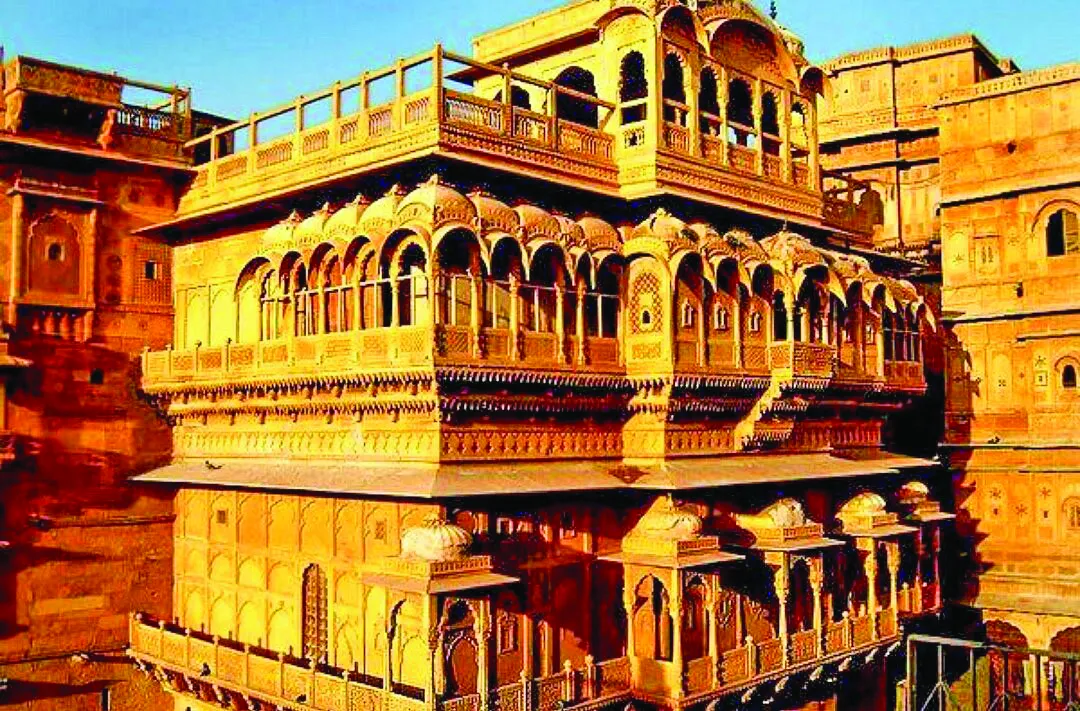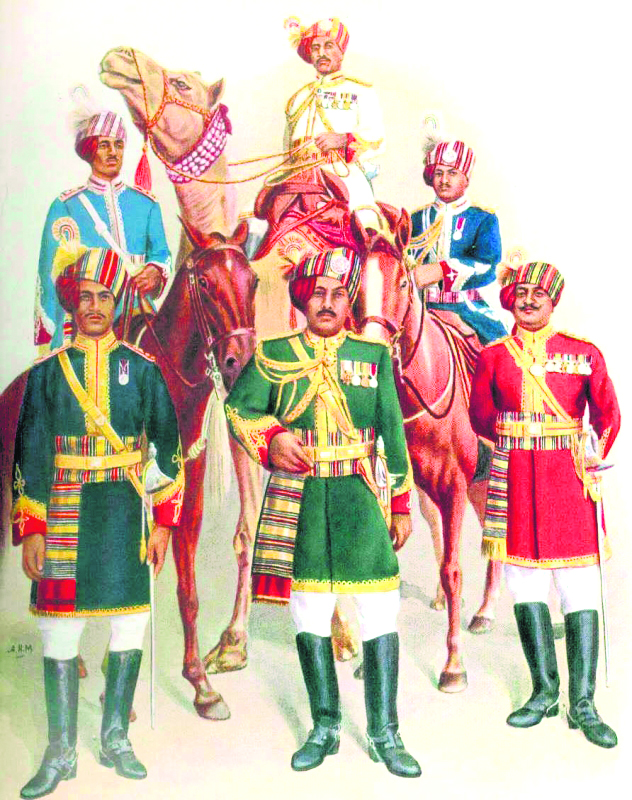A deep dive into Patwon ki Haveli, where centuries old artistry whispers tales of wealth, ambition, and architectural genius. Patwon ki Haveli is a segment dedicated to a wealthy trader’s vision and a father’s ambitious gift to his sons. Built between 1800 and 1860 by Guman Chand Patwa, this architectural marvel isn’t just one haveli but a complex of five interconnected mansions, each originally intended for one of his sons.
The Cloth Merchant’s Canvas
Guman Chand Patwa wasn’t just any merchant he dealt in brocade, gold embroidery, and opulent textiles that adorned royalty across continents. His trading empire stretched from Afghanistan to China, bringing immense wealth that he would eventually translate into this architectural masterpiece. The irony isn’t lost on visitors today a man who made his fortune in fabric chose to immortalize his legacy in stone.
Architecture That Defies Time
Rising five stories into the desert sky, Patwon ki Haveli challenges conventional architectural wisdom. Its narrow street location makes it impossible to capture the entire structure in one glance, creating an element of surprise as visitors discover new details with each step. The haveli’s construction demonstrates a sophisticated understanding of desert architecture its orientation and design ensuring comfortable temperatures year-round, long before the advent of modern cooling systems.

The Dance of Light and Shadow
The haveli’s most remarkable feature is perhaps its jharokhas ornate overhanging balconies that create a mesmerizing play of light and shadow throughout the day. These aren’t mere decorative elements; they’re architectural innovations that served multiple purposes. The intricate latticework allowed women of the household to observe street life while maintaining purdah, while also acting as natural air conditioners in the harsh desert climate.
Artistry in Every Corner
While time has dimmed some of its glory, the haveli’s remaining artistic elements tell stories of unparalleled craftsmanship. The surviving paintings and mirror work on the interior walls offer glimpses into a past where no expense was spared in pursuit of beauty. Each room tells its own story some through geometric patterns that seem to dance in candlelight, others through fading murals that still hint at their original vibrancy.
The Golden Age of Architecture
What makes Patwon ki Haveli unique is its fusion of various architectural styles. The structure incorporates elements from Rajput architecture, Islamic influences, and even traces of European design a physical manifestation of the cross-cultural trading networks that enriched Jaisalmer. The yellow sandstone exterior, carved with precision that modern tools would struggle to replicate, changes color throughout the day, from pale gold at dawn to deep honey at sunset.

A Symphony in Sandstone
The haveli’s construction itself is a marvel of engineering. Using the local yellow sandstone, craftsmen created interlocking blocks that have held steady for over two centuries without using cement. The stone’s properties its ability to expand in heat and contract in cold while maintaining structural integrity were perfectly understood by the builders, who used this knowledge to create a building that has withstood the test of time.
The Mirror Palace Within
One of the most spectacular features of the haveli complex is its mirror work chambers. Though some have lost their luster, the remaining sections demonstrate how strategic placement of mirrors once created infinite reflections, making rooms appear larger and more luminous. These chambers weren’t just about aesthetics they served as natural light amplifiers in an era before electricity.
The Merchant’s Quarters: Where Business Met Luxury
The ground floor of the haveli, once used for business transactions, reveals how commerce and luxury coexisted in 19th century Jaisalmer. Hidden storage spaces, clever accounting chambers, and secret vaults speak of a time when the silk route brought both prosperity and the need for security. The intricate carved archways leading to these areas were designed to impress visiting traders while maintaining the privacy of the residential quarters above.
Women’s Domains: The Hidden Spaces
The upper floors of the haveli contained the zenana areas reserved for women. These spaces feature some of the most elaborate architectural elements, including screened windows that allowed for privacy while ensuring ventilation. The surviving paintings in these sections often depict scenes from everyday life, providing rare insights into the domestic culture of wealthy merchant families.

The Art of Preservation
Today, Patwon ki Haveli faces the challenges of preservation in a rapidly modernizing world. While parts of the complex have been converted into a museum, others remain private property, creating unique challenges in maintenance and restoration. The delicate balance between preservation and accessibility continues to be a point of discussion among conservationists.
Stories in Every Stone
Each carved panel and painted wall in Patwon ki Haveli tells multiple stories of the artisans who created them, the families who lived among them, and the changing fortunes of Jaisalmer itself. Some motifs are purely decorative, while others carry deeper symbolic meanings, creating a visual language that speaks across centuries.
Living Heritage
Unlike many historical monuments that stand empty, parts of Patwon ki Haveli continue to pulse with life. The ongoing presence of residents in certain sections helps maintain the building’s original character while presenting unique challenges in conservation. This living heritage aspect adds an authentic dimension to the visitor experience, making it more than just another tourist destination.
The Future of the Past
Conservation efforts at Patwon ki Haveli represent a broader dialogue about heritage preservation in India. Modern techniques are being carefully employed to stabilize and restore different sections while maintaining historical authenticity. Digital documentation of the haveli’s architecture and artworks is underway, ensuring that this architectural treasure is preserved for future generations, at least in digital form.
Beyond Tourism
While Patwon ki Haveli is one of Jaisalmer’s prime tourist attractions, its significance extends far beyond tourism. It serves as a valuable resource for architects, historians, and artisans studying traditional building techniques and design principles. The haveli’s innovative solutions to climate control and space utilization continue to inspire contemporary sustainable architecture.
Legacy in Stone
As Jaisalmer evolves in the 21st century, Patwon ki Haveli stands as more than just a tourist attraction or a historical monument. It represents the culmination of artistic vision, architectural skill, and merchant wealth that characterized a golden age in Rajasthan’s history. Its partially faded glory serves as a poignant reminder of the need to preserve our architectural heritage while adapting to modern realities.
The haveli’s story is far from over. Each generation brings new challenges and opportunities for preservation, new technologies for restoration, and new eyes to appreciate its ancient beauty. As the sun sets over Jaisalmer, casting long shadows through the haveli’s jharokhas, it continues to stand proud a golden thread connecting past to present, a testament to human creativity, and a reminder that true beauty, even when faded, never loses its power to inspire.























